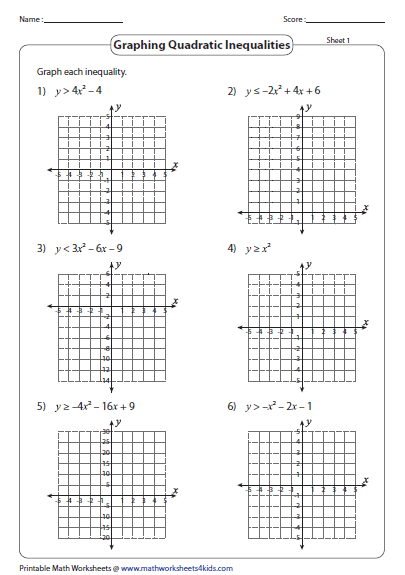
Solving Equations by Multiplication, Division, or Taking the Reciprocal.Solving Equations by Addition or Subtraction.
Quadratic inequalities how to#
The topic ends with information on how to solve equations that require multiple steps and equations that include multiple variables. It starts with the basic concepts that will be used, including isolating the variable and combining like terms, before showing how to use these concepts in specific equations. This topic includes subtopics on different ways to do just that. This principle is of great help in finding the value of variables. The most important rule of solving equations in algebra is that anything done to one side of an equation must be done to the other.

We would have found the same result when applying the -formula.

The parabola ‘opens up’, has two intersection points with the -axis and thus the inequality is satisfied for: We immediately see that the left-hand side can be factorized: The parabola lies entirely above (‘opens up’) or below (‘opens down’) the -axis. In this case the equation has no (real) solutions. For this value of the function equals, for other values of it is greater than (‘opens up’) or less than (‘opens down’). In this case the solutions and are equal. Then, depending on (‘opens up’ or ‘opens down’) we know for which values of the function is greater or less than is. The parabola intersects the -axis in two different points.

In this case the solutions and are different. Next, we make use of the fact whether the graph of the quadratic function is an ‘opens up’ or an ‘opens down’ parabola. We calculate the solutions of the corresponding equation, and the value of the discriminant: Both methods, factorization or applying the abc-formula, can be used. When solving quadratic inequalities, we must always make use of solving quadratic equations. In Quadratic equations (factorizing) and Quadratic equations (abc-formula) we discussed extensively how this type of equations could be solved. It is advised to study these topics first before you continue with quadratic inequalities. Of course, because otherwise it is no quadratic inequality. A standard quadratic inequality has the same form as the corresponding equation with an inequality sign instead of an equal sign, see the following example:


 0 kommentar(er)
0 kommentar(er)
